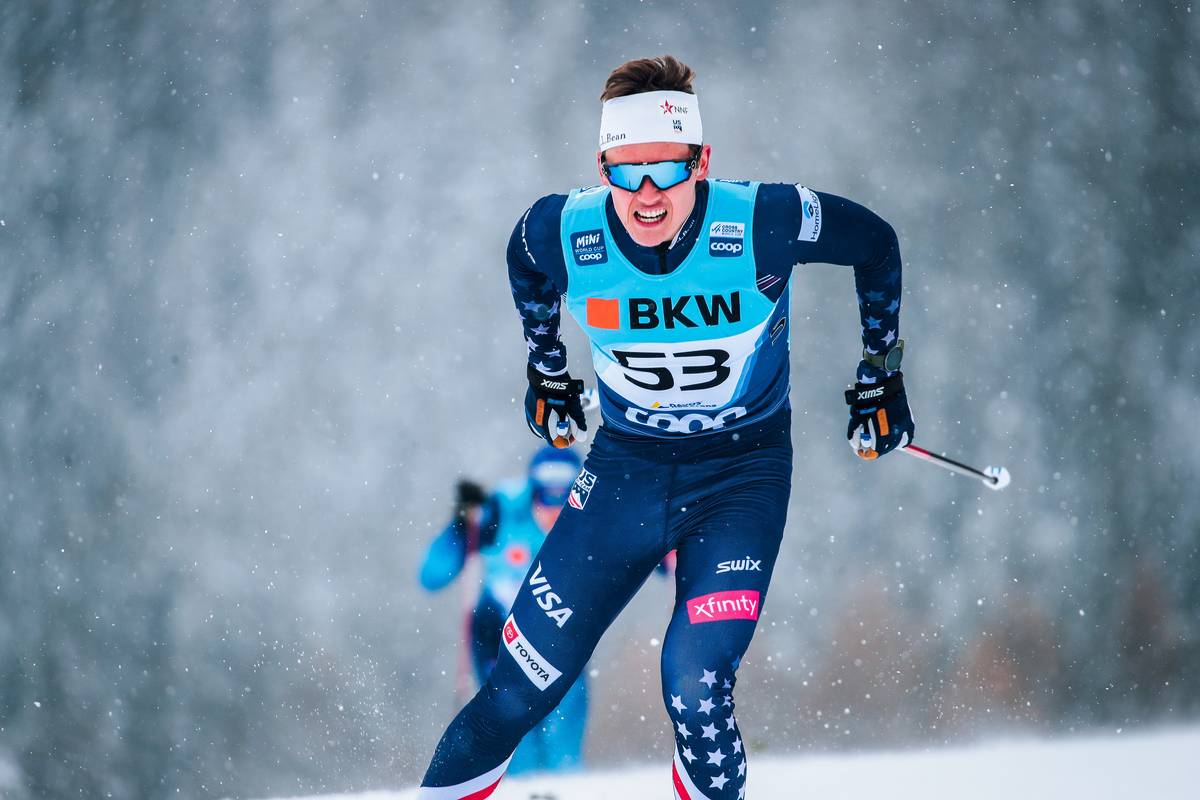ZHANGJIAKOU, CHINA — Just about everyone involved with the U.S. Ski Team has a story about physiotherapist Zuzana Rogers fixing some weird corner of their body.
“I had a dislocated cuboid bone, and she diagnosed it over Skype and essentially talked me through repositioning it, and I was better,” said Holly Brooks, the retired Olympic cross-country skier from Alaska. “It was insane.”
Eli Brown, one of the team’s ski technicians, thought he had an Achilles tendon problem.
“She worked on me for five minutes and gave me this, like, grab-onto-the-side-of-my-groin type of claw move, and it fixes it all the way down,” he said. “It’s like magic voodoo.”

Eleven-ish months out of the year, Rogers operates an Anchorage physical therapy clinic that caters to runners and skiers.
But she’s also become a trusted asset of the U.S. Ski Team, which flew her to China for a volunteer gig working with cross-country athletes at the Olympic Games this month. She’s one of some 20 Americans working with the team behind the scenes — coaches, support staff and ski technicians who athletes call indispensable to their performances here.
As the team’s physical therapist, Rogers helps the Olympians recover from injuries, strains and the inevitable tweaks that crop up over two-and-a-half intense weeks of racing.

The job also involves an array of less glamorous tasks, like carrying athletes’ bags, choreographing start times and logistics and making sure people are fed and hydrated.
“It’s a very stressful vacation,” Rogers said. “A working and very rewarding vacation.”
Rogers took a circuitous path to her work with the ski team, which she’s been doing for about a decade.
She grew up as a downhill ski racer on socialist Czechoslovakia’s and Slovakia’s national team, then was recruited to compete for University of Alaska Anchorage. She still doesn’t know what exactly led to UAA’s coach to cold-call her at home.
“I didn’t speak any English,” Rogers said. “So, I graciously deferred for one year and made an effort to learn a little bit more.”
The call was a huge opportunity to leave the country, and Rogers ended up as a three-time all-American. Afterward, she took her interest in medicine to physical therapy school, and she started working with skiers through Alaska Pacific University’s club team, which has brought her to camps on the Eagle Glacier above Girdwood.
The work with the U.S. team at events like the Olympics and the Tour de Ski are a chance for her to get experience with elite athletes — and to trade knowledge with other members the squad’s medical support staff, like massage therapists and doctors.
It’s also a chance to watch the athletes perform from a few yards away.
“It gives you that adrenaline rush — especially knowing the background of the athletes and how much work they put into it,” she said. “It gives me shivers down the spine.”
Athletes at the Games said that Rogers, in addition to being a skilled physical therapist, adds a warm and reassuring presence to the U.S. team — particularly for younger skiers in the frenetic environment of the Olympics.
“She’s just really confident — she’s been around for so much,” said Luke Jager, 22, a U.S. sprinter competing at his first Games.

“You come to her after a race, or between a qualifier and heats, and she’s like, ‘Here’s what we need to do,’” said Ben Ogden, 22, another Olympic rookie.
Coaches said that physical therapists like Rogers can also be an important outlet for athletes.
“They’re some of the people that have the best opportunities, sometimes, to talk. Because the athletes are just on the table,” said Matt Whitcomb, the U.S. Ski Team’s head coach at the Olympics. “A lot of times, particularly on a race day, the coaches are up at the venue. And maybe the athletes don’t want to talk to us.”
Whitcomb called Rogers a “catch” who he hopes will keep working with the American team for another decade. That seems likely, even if Rogers is only a volunteer.
“We don’t get paid with money, but we get paid with other means,” Rogers said. “And I would not change it for anything.”

Nathaniel Herz
Nat Herz is an Alaska-based journalist who moonlights for FasterSkier as an occasional reporter and podcast host. He was FasterSkier's full-time reporter in 2010 and 2011.



